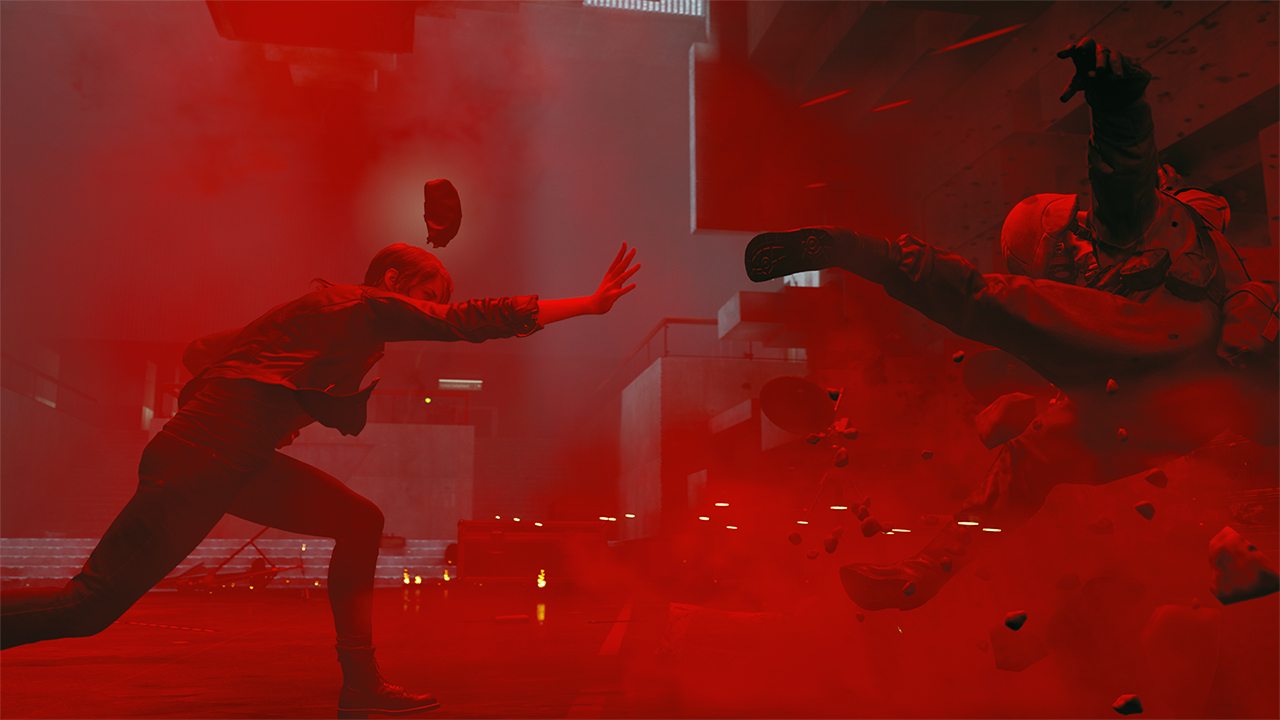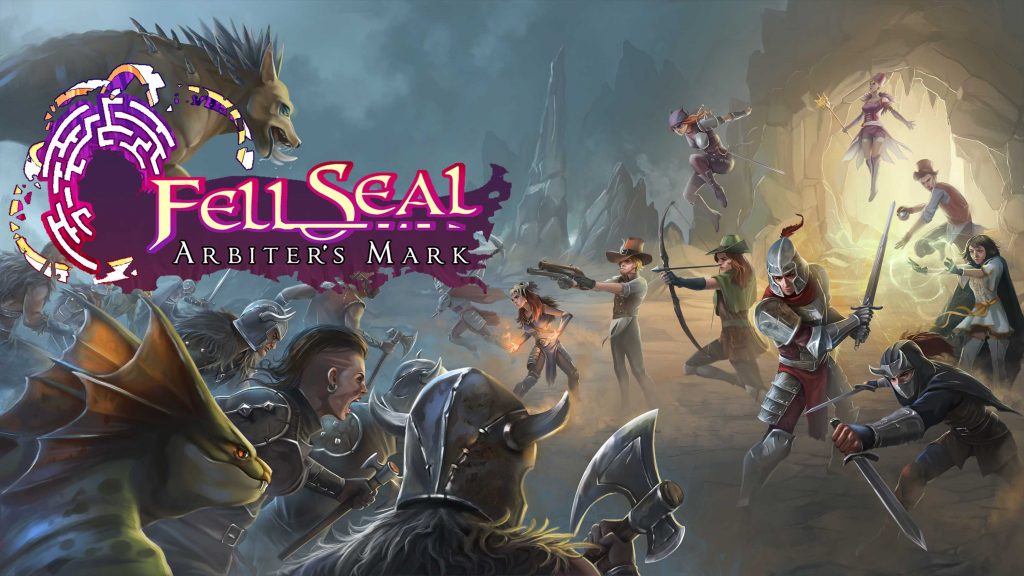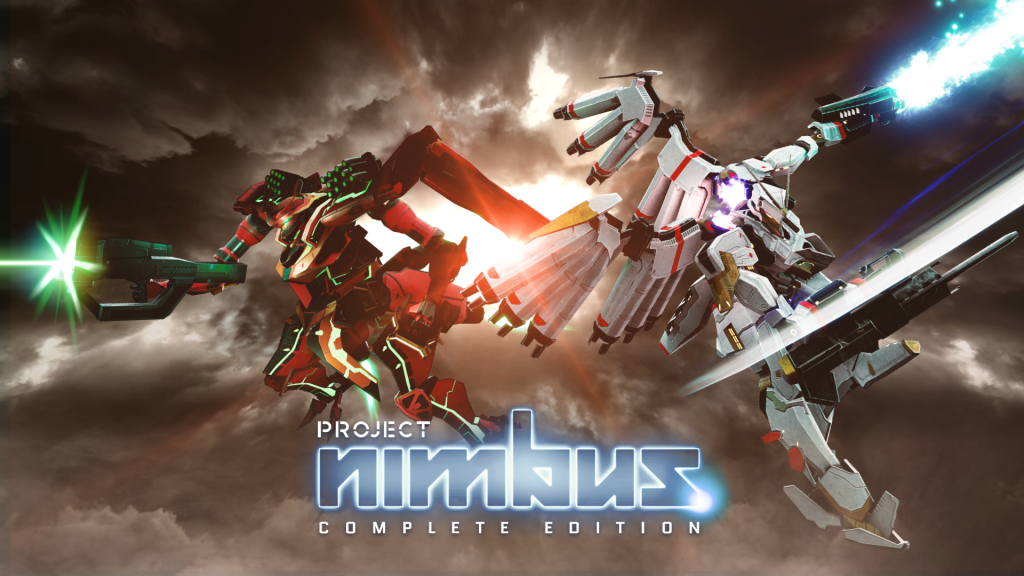I was close to starting this review with a metaphor about a lure and how all games have one. Some idea that shines, twinkles, entices you. After reading what I came up with, I axed it. It described my experience with Control, but didn’t do it justice. So I read and reread my thoughts. I found one word that kept popping up: momentum. Control takes lofty, grandiose concepts and urges you toward them in trappings that are at once familiar and alien. Control is bubbling with concepts that will stretch your mind, but it rarely gets lost in the complexity. Given the complex story and setting, Control contains little fat. What’s there serves to enhance the experience, giving it definition. Full of details that will keep you moving, whether deeper into the intricacies of its story, further into its campaign, or beyond into its post-game, momentum defines Control. Momentum does Control justice.
There has been a fair amount of buzz around Control, published by 505 Games and developed by Remedy Entertainment, creators of Max Payne, Alan Wake, and Quantum Break. Remedy’s titles share strong main characters, and are heavily focused on story. Control is no different. You take control of Jesse Faden, a woman with a mysterious past who is looking for her missing brother. Her search brings her to the Federal Bureau of Control (FBC), a government agency dealing in the paranatural. You quickly discover that the FBC has been overrun by an inter-dimensional entity, the Hiss, and it is your role to stop them. Jesse Faden becomes the new Director of the FBC and you must take back control of the FBC headquarters, known as the Oldest House.
From this simple set up on through to its conclusion, Control surprises and delights. Immense depth, intriguing ideas, shocking revelations, complicated characters… it’s all here. The Oldest House, an unsuspecting New York building, is downright labyrinthine on the interior. It brings to mind a smattering of government agencies and their headquarters from the world of ficton: The Shop, from Stephen King’s works, Hawkin’s Lab, from Stranger Things, and the Men in Black Headquarters, from Men in Black, come to mind. Control plays with the tropes of the secret government agency, while managing to rise above them. The Oldest House is one hell of a setting. The depth it contains and the curiosity it draws burrows deep. I suspect I’ll be thinking on this one for some time. I can’t wait to jump back and clean up in the post-game.
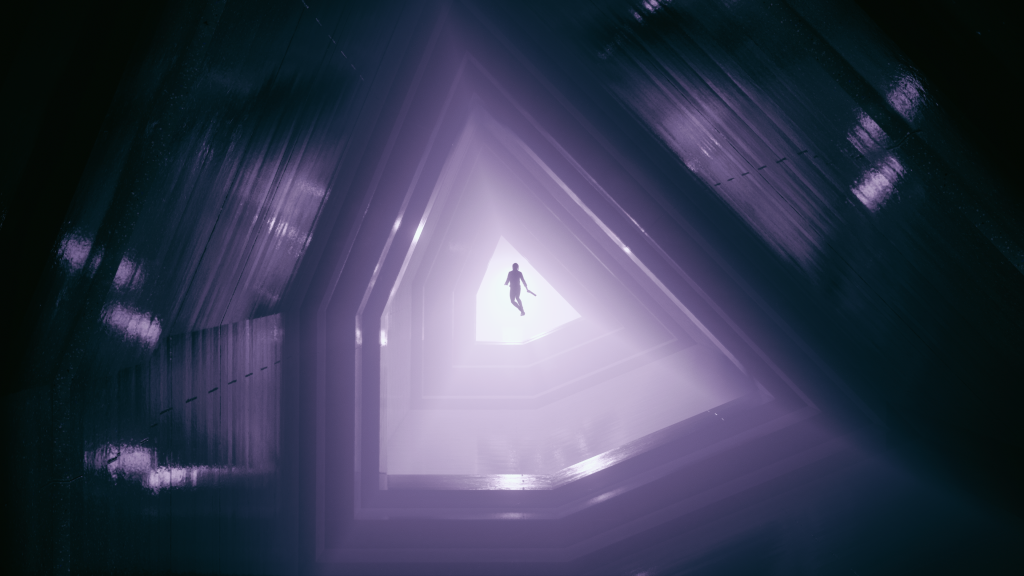
Courtesy: 505 Games and Remedy Entertianment
The attention to detail in design propelled me towards exploration as I navigated the compelling interior of the Oldest House. You’ll get the chance to travel through a collection of sectors, starting in the Executive Sector, housing most of the standard offices. I don’t want to speak too much of what you’ll discover, but the creativity in each one and the feeling of excitement navigating a unique space never stops. This was one of the most pleasing aspects of Control to me, taking something so well trodden as a secret government building, and creating a wholly unique space. It manages to keep you in suspense as you navigate, not really clear what you’ll find as you go deeper.
I mentioned this in my preview for Control coming out of E3, but there is a heavy Metroidvania influence. Remedy keeps a steady trickle of abilities coming your way throughout Control. As a player, I appreciated the thought placed on not only what I was given, but how those abilities were used. The Oldest House is a devious collection of spaces that connect in interesting ways, and using the paranatural abilities you discover to connect the dots is sheer gaming pleasure. The powers you receive throughout Control always make returning to previous areas a joyful prospect, finally able to explore areas that were just out of reach. By the end of it, you’ll have a handful of paranatural abilities, each used thoughtfully and to its fullest. Control is a game with little fat in its design. This lack of fat really propels you along your journey.
The paranatural abilities are scattered around the Oldest House to discover, but your weapon will be with you from the start. The weapon in Control is a highlight. It’s called the Service Weapon. Through the course of the game, you can add on different firing modes. It starts as a standard pistol, but will soon gain the ability to become a shotgun, and so on. The Service Weapon morphs in real time, changing not only ammo type but its physical makeup on screen. Seeing this is just cool. I try to stay away from that word, but watching it shift at the press of a button always gave me that goofy little smirk reserved for cool stuff. You know the one. I really appreciate how Remedy chose to tackle new weaponry. Finding new guns is always a treat, but its something most people expect. Having one gun and watching its versatility unfold on the fly was exciting to watch from beginning to end.
Weapon upgrades are “bought” from Control Points (essentially save/fast travel points) through an assortment of collectibles and experience points. This gives you a good bit of freedom in the order you expand your arsenal. It also guarantees that any weapon is fit for any job. You’ll never outgrow your trusty pistol, a common complaint I have with many a starting weapon. All weapons can be upgraded in power as well. Upgrading adds additional modification slots, allowing a nice bit of customization. In addition to the weapon modifications, there are also personal modifications that give you more health, better accuracy, and the like. You’ll receive countless numbers of these mods along the way, but their value is easily identified through a rating system similar to an MMO. A curious plus for me was the limited inventory. Control keeps you shedding excess baggage, giving you upgrade materials in return. Dropping unwanted items both rewarded me while keeping menu time to a minimum.
All of this upgrading would be pointless if the combat failed to impress. Remedy has given us a really well-honed combat system. I am often hit or miss with 3rd person gunplay. Growing up on DOOM 1993, I often think gunplay needs to be fast and aggressive, and I often find 3rd person gunplay lacking in this regard. I was happy to find that the gunplay is electrifying. Lacking a traditional cover mechanic, Control keeps things moving. Combat moves at a blistering pace, and the use of verticality in environments kept me on my toes. Enemies are both grounded and aerial, offering a pleasant mix of tactics to keep things moving. Keeping with the theme of momentum, there is no recharging health or health pickups scattered around the arenas. Instead, every enemy you take out will drop a collection of health pickups, but you have to run in to get them. This mechanic reminded me of Glory Kills in DOOM 2016. Like DOOM 2016, health only comes from enemies, and the only way to retrieve them is to leave the safety of cover. It’s great. You know you will always get health from downing enemies and you also know if you want it you have to get your hands dirty. Keeping with the theme, momentum is at the forefront of the combat.
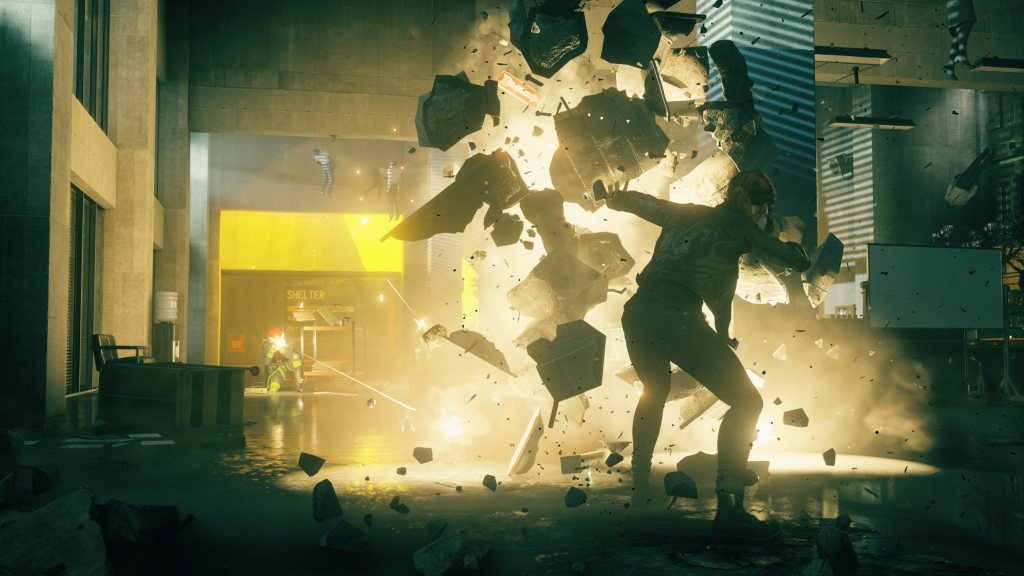
Courtesy: 505 Games and Remedy Entertainment
If there is one downside to this upgrading system for weapons, it’s that the rush of stumbling upon a new weapon doesn’t happen in the same way it would in a similar game. Instead of finding an additional weapon in the wild, or getting upgrades through a familiar NPC, the menu system clearly presents what is available to purchase. Its a small gripe, but worth mentioning, as it is a hallmark of this style of labyrinthine game design. The upgrade materials you gather also never amount to much more than a chance to upgrade. The way Remedy chose to handle upgrades is fine, but it does take a lot of the joy out of discovery and tracking down items you need. I understand why they chose to go this route, but the amount of upgrade materials seems rather arbitrary and locking them in to be used for one game mechanic only deadened my curiosity. I found myself wishing for some flavor text for these items I was always picking up. Its a small gripe, like I said, but when the universe is so well fleshed out in most other areas, it stands out.
One thing that remained a constant throughout upgrades was the ammunition system. Remedy opted for a system of recharging energy for the Service Weapon, regardless of weapon type. I loved it. Not requiring the player to scavenge for ammo was a great call. Instead, each firing mode has a certain amount of uses before needing to recharge. Not worrying about ammo was a welcome break from most shooters. The most obvious question then is, “What do I do when waiting to recharge?” You telekinetically throw whatever you can at the enemy!
Part of that steady trickle of abilities I mentioned above is telekinesis. Pretty much any object, with few exceptions, can be lifted and thrown at enemies. Its a mainstay of the combat and as long as you do good energy management (both for your Service Weapon and your Paranatural Powers) you should never be at a loss for offensive abilities. This ability (among others) stays with you until the end, can be upgraded and you’ll come across some great uses for it. Telekinesis brings with it some of my favorite moments of the game. The sound of telekinetically throwing objects will stick with me; its a memorable bit of audio design, reminding me of Tie Fighters particularly. It makes any combat encounter that much more lively as the sound design tickles your ears.
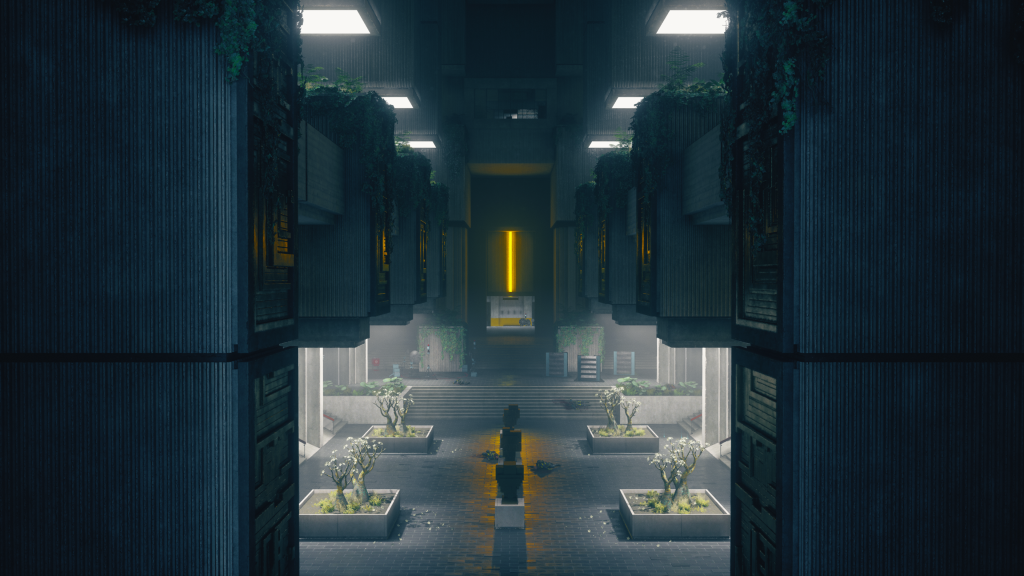
Courtesy: 505 Games and Remedy Entertainment
Not only the sound, but the visuals were compelling. The way objects explode and the way interiors around you fall apart during combat had my jaw on the floor. The most apt comparison is the Lobby Scene from The Matrix. The way pillars fall apart as bullets and debris pummel them never grew tiresome. To have a shootout in an atrium, only to walk out leaving a war zone in your wake, is an experience I didn’t know I needed before Control. Destructible environments have been around for a long time, but the way things fall apart in Control gave me a rush.
The visual and audio design is top shelf, all thanks to Remedy’s Northlight engine. The ambience made by the score as well as the pervasive babbling of the Hiss will give you shivers. Gunplay is loud and foreboding. Enemies screech at you and their attacks reverberate. On the visual side, Remedy’s Northlight engine delivers some wonderful scenes. Of particular note is the mixture of rendered people and objects with the inclusion of recorded video throughout. Remedy has long dabbled with recorded film in their games, and Control keeps the tradition. Throughout the Oldest House, you will watch several videos on projectors. I loved the way this brought me into the world Remedy created.
Everything works so well to bring you into the world, that the small things really stand out. A small complaint I had with the campaign was enemy variety. Your antagonist, the Hiss, take control of FBC employees, and this amounts to a lot of similar enemies throughout the campaign. After playing through and experiencing the story, though, my hold ups to enemy variety have lessened substantially. I was glad that the themes of the story drove the main enemies you come across. Narratively, Control is stronger because of it.
While making your way through the campaign, make sure you go off the beaten path and stick around for the post-campaign content, too. I stuck to the main campaign pretty stringently at the start, but eventually chased some rabbit trails and what I found was well worth it. Aside from the usual rewards, I was gifted with some truly memorable enemy encounters. Some of the extra content in store to those that seek it out is great stuff. Thoughtful from a story perspective and challenging from a gameplay perspective, Remedy’s knack for trimming fat and keeping momentum finds its way into every nook and cranny.
Diving into Control, I had no idea what to expect. All I knew was that it was going to be a little strange and a lot of wild. It was that, but the momentum shines through it all. Remedy has a story to tell and an experience to give you, and they do so with aplomb. Control is going to sit with me for a while, not just because of its thoughtful narrative and not just because of its compelling gameplay. It’s going to sit with me because of its clear focus and commitment to momentum. For a game filled with characters and situations on the verge of collapse, who have lost control and are struggling to hold on, it really never lets you forget that the situation is dire and you need to take control. Remedy gives you a number of tools, all of them having a good bit of complexity, but simplified in their application. The world of Control, the Oldest House, is a complex setting, housing mysteries that pile atop one another. The way you navigate, though, is streamlined, quick, and easy to grasp. This juxtaposition is fascinating to experience and difficult to forget.
Control releases August 27th for PS4, Xbox One, and PC, exclusively through the Epic Game store.
